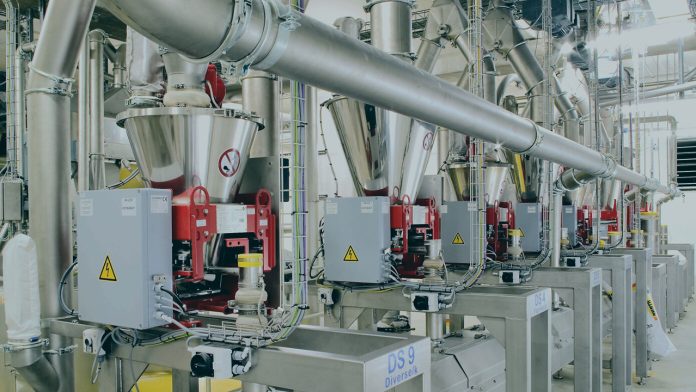When it comes to material feeding in industrial processes, selecting the right feeding technology is critical for achieving optimal performance and efficiency. Volumetric and gravimetric feeders are two commonly used solutions, each offering unique advantages and considerations.
Among the companies that offer these two solutions is Yushine. For more detailed information on their feeder solutions, read more on Yushine’s website. This article compares these two technologies and provides insights into choosing the right solution for your application.
Volumetric and Gravimetric Feeding Technologies
Volumetric Feeders
These feeders operate based on capturing and dispensing a predetermined volume of material with each cycle. A rotating metering unit, designed with screws, vanes, or discs depending on the material properties, consistently measures a specific volume within its chamber. The captured material is then transported to the discharge point. By adjusting the rotation speed of the metering unit, the feeder regulates the material feed rate.
Gravimetric Feeders
These feeders utilize a sophisticated weighing system to measure and dispense predetermined quantities of material precisely. Each material component has a dedicated hopper with a load cell continuously monitoring weight. The feeding systems control material flow from each hopper based on weight data. A control unit receives weight data from the load cells, compares it to the programmed recipe, and adjusts feeder operation to achieve the target weight for each material.
Factors to Consider When Selecting Feeding Systems
Choosing between volumetric and gravimetric feeders depends on several factors specific to your application:
Accuracy Requirements
For applications demanding the utmost precision in material ratios, gravimetric feeders are the superior choice. Their direct weight measurement eliminates dependence on factors like bulk density variations, which can impact volumetric feeder accuracy.
Material Properties
Volumetric feeders work well with free-flowing materials like pellets or granules. For materials with poor flowability or those prone to bridging, gravimetric feeders might be necessary to ensure consistent material flow.
Process Requirements
If consistent volume output is sufficient for your application and bulk density variations are minimal, volumetric feeders can be cost-effective. However, gravimetric feeders are a better fit for processes requiring precise control over material ratios.
Production Budget
Volumetric feeders typically represent a more economical option compared to gravimetric feeders. However, the potential cost savings from material waste reduction and improved product quality with gravimetric feeders can sometimes offset the initial investment.
Case Studies: Decision-Making Process for Feeder Selection
Here are two scenarios to illustrate the decision-making process for feeder selection:
Scenario 1: Plastic Bottle Production
Suppose a plastic bottle manufacturer requires a feeder to dose plastic pellets used in the production process. Bulk density variations are minimal, so a volumetric feeder would be a suitable and cost-effective solution for this application.
Scenario 2: Pharmaceutical Blending
A gravimetric feeder is the best choice for a pharmaceutical company that needs to precisely meter and blend various powdered ingredients for drug production. Its high dosing accuracy ensures consistent, precise material ratios.
Takeaways
By understanding the core functionalities of volumetric and gravimetric feeders, you can make an informed decision for your specific application. Remember, gravimetric feeders are the way to go for situations demanding the highest level of dosing accuracy.
When consistent volume output is sufficient, and cost is a primary concern, volumetric feeders can be a valuable option. For a comprehensive analysis of your specific needs and to explore Yushine’s wide range of feeder solutions on their website.








